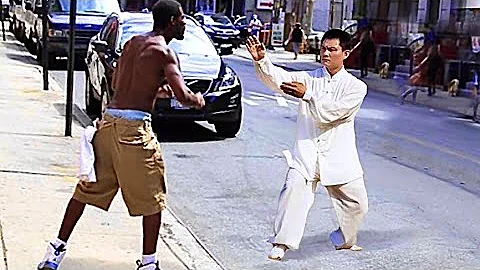Discover the Vibrant Traditions of Nowruz
Table of Contents
- Introduction to Nowruz
- The History of Nowruz
- Persians and Nowruz
3.1 Celebrating Nowruz as a Persian
3.2 Nowruz Traditions and Customs
- Nowruz Symbolism
4.1 The Haft-Seen Table
4.2 The Meaning of Each Item on the Haft-Seen Table
- Nowruz Festivities
5.1 Visiting Elders
5.2 Food and Dancing
- Nowruz vs. Western Celebrations
6.1 Nowruz and Christmas
6.2 Nowruz and Easter
- The Uniqueness of Nowruz
- Personal Reflections on Nowruz
- Conclusion
- Resources
Introduction to Nowruz
Nowruz is a vibrant and ancient celebration that marks the Persian New Year. With a rich history spanning thousands of years, Nowruz is a time of joy, renewal, and reflection for Persian, Kurdish, Central Asian, and Ismaili communities. This article delves into the significance of Nowruz, its traditions, and the unique ways in which it is celebrated.
The History of Nowruz
Nowruz finds its roots in the ancient religion of Zoroastrianism. Celebrated at the spring equinox, typically around March 21st, Nowruz heralds the arrival of spring and the start of the new year in the Persian calendar. Despite its ancient origins, Nowruz continues to be celebrated with immense enthusiasm and reverence in modern times.
Persians and Nowruz
Celebrating Nowruz as a Persian
For Persians, Nowruz is not just a cultural celebration but an essential part of their identity. It serves as a time for family and friends to come together, exchange gifts, and enjoy delicious delicacies. The festivities typically last for thirteen days, during which people engage in various activities to welcome the new year.
Nowruz Traditions and Customs
One of the integral traditions of Nowruz is the act of spring cleaning. It is believed that a clean home symbolizes a fresh start and invites good fortune for the year ahead. Additionally, the centerpiece of Nowruz is the Haft-Seen table, adorned with seven items that start with the Persian letter "S". Each item holds symbolic significance and represents different facets of life.
Nowruz Symbolism
The Haft-Seen Table
The Haft-Seen table is a visual representation of Nowruz. It comprises seven items that hold symbolic meaning and are carefully arranged on the table. These items include sprouted wheat grass, samanu (wheat pudding), senjet (dried fruit paste), serkeh (vinegar), seeb (apples), seer (garlic), and sumac (spice of berries). The table is also adorned with a mirror, goldfish, candles, and painted eggs, all of which carry their own significance.
The Meaning of Each Item on the Haft-Seen Table
The sprouted wheat grass symbolizes rebirth and the renewal of nature, while the samanu represents fertility and the sweetness of life. Senjet is a reminder of love and affection, and serkeh symbolizes patience and age. Apples are a symbol of health and beauty, and garlic represents good health. The spice of berries signifies the sunrise and the spice of life. The mirror symbolizes self-reflection, while the goldfish and bowl of water represent movement and life. Together, these items create a vibrant and meaningful display.
Nowruz Festivities
Visiting Elders
A significant aspect of Nowruz is paying respect to one's elders. It is customary to visit older family members and friends in order of their age, starting from the oldest. This act of reverence strengthens family bonds and fosters a sense of unity and respect.
Food and Dancing
No Nowruz celebration is complete without delicious food and joyful dancing. Families come together to prepare traditional dishes and share meals. Dancing and music fill the air, creating an atmosphere of joy and merriment. Nowruz truly embraces the spirit of celebration and togetherness.
Nowruz vs. Western Celebrations
Nowruz and Christmas
Nowruz shares some similarities with Christmas, as both celebrations involve gift-giving and a festive atmosphere. However, Nowruz predates Christmas by thousands of years, making it one of the oldest known celebrations in the world. While Christmas has its unique traditions, Nowruz offers a distinctive and culturally rich experience.
Nowruz and Easter
Nowruz also bears resemblances to Easter. The presence of grass and painted eggs in Nowruz celebrations mirrors the symbolism of rebirth and fertility associated with Easter traditions. Interestingly, Nowruz predates Easter by thousands of years, highlighting the timeless nature of this ancient celebration.
The Uniqueness of Nowruz
Nowruz stands out for its inclusivity and the sense of unity it fosters among those who celebrate it. Persian culture warmly embraces anyone who wishes to be a part of the festivities, regardless of their background. This openness creates a harmonious and vibrant atmosphere that welcomes all.
Personal Reflections on Nowruz
Nowruz holds a special place in the hearts of those who celebrate it, providing an opportunity for introspection, gratitude, and familial bonds. The author of this article shares their experience of celebrating Nowruz with Persian friends, acknowledging the beauty of their inclusive culture and the sense of kinship it brings.
Conclusion
Nowruz is a time of celebration, renewal, and unity. Its ancient roots and enduring traditions give it a timeless charm. Whether as a Persian or someone embracing the festivities, Nowruz offers a unique and enriching experience filled with joy, symbolism, and cultural significance. Let the spirit of Nowruz inspire us all to embrace new beginnings and cherish the blessings of life.
Resources







